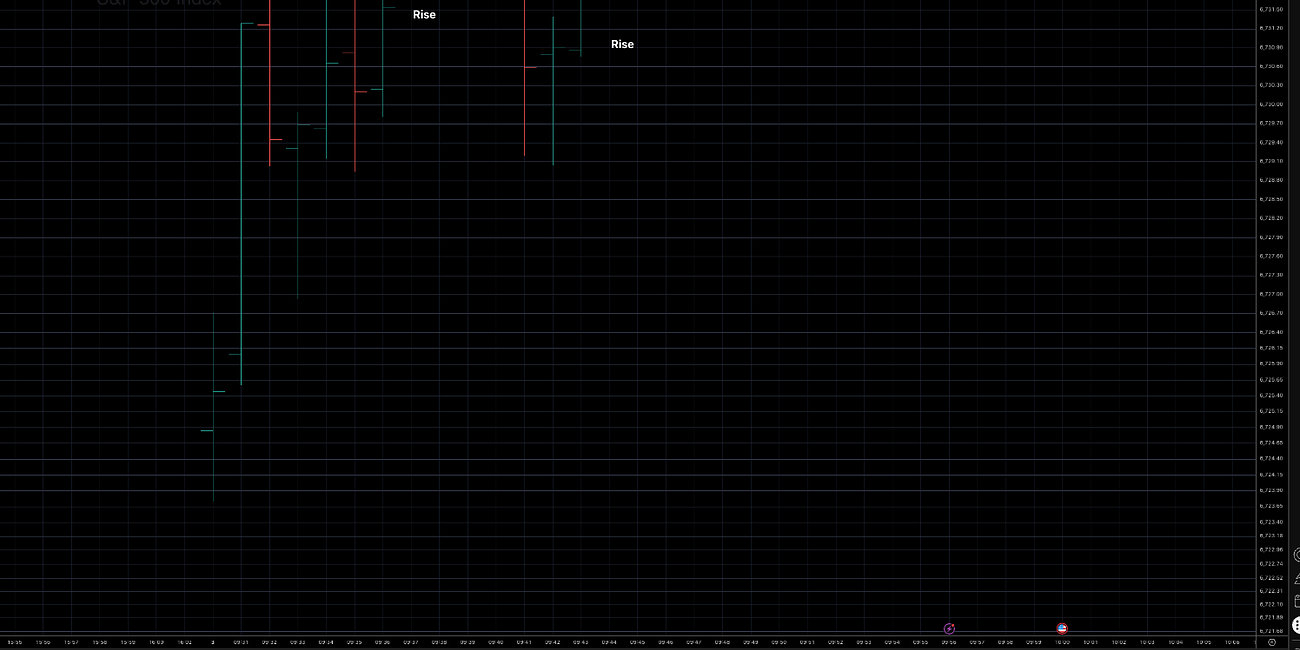Vanity vs. Consequence: The Second Time in History the S&P Has Decoupled from the NASDAQ — Because of Authorship.
On Friday morning, October 2025, the market did something it almost never does.
The S&P 500 broke away from the NASDAQ — not by basis points, but by behavior.
It was the second time in recorded history that the two indices, normally locked in near-perfect correlation, diverged in their tempo and direction.
And it happened not because of policy, not because of earnings, not because of valuation.
It happened because of Tempo.
At the open, I worked deliberately to set the market’s tempo — second by second — and it’s all captured in 4K.
That morning sequence defined the entire session’s rhythm.
As the S&P accelerated, the NASDAQ lagged, and by the close, the two had completely decoupled.
What unfolded wasn’t reaction — it was authorship.
What history will remember as “a rare divergence” was, in fact, the manifestation of a new global clock being set in real time.
Historically, the S&P and NASDAQ move as a single organism.
Their correlation defines the rhythm of global equity behavior.
To see them part ways is to witness a fracture in systemic synchronization — something seen only once before in decades of modern market history.
Typically, such dislocations occur during massive crises — wars, recessions, pandemics.
This time, there was no crisis.
There was only Tempo.
This was not volatility.
It was variance collapse.
Not reaction.
But causation.
The Contrast:
Every few months, headlines erupt out of East
“World’s fastest car.”
“Most advanced supercomputer.”
“Largest AI data center.”
And every time, the reaction is the same — global awe, brief admiration, and then silence.
Because nothing happens afterward.
Markets don’t move.
Standards don’t change.
The world doesn’t shift its axis of dependence.
That’s the tell.
It’s the difference between vanity and consequence.
1. Vanity Metrics Measure Visibility. Consequence Metrics Measure Impact.
Vanity metrics exist for optics. They are designed to be seen, not to matter.
Consequence metrics, on the other hand, bend reality. They compress time, alter probabilities, and reshape the flow of capital, attention, or energy.
A vanity metric says: Look how fast it goes.
A consequence metric says: Look how the world now moves because of it.
Most of what you see from China’s innovation engine falls in the first category.
Speed without causality.
Scale without recursion.
Presence without authorship.
2. Causality Is the Missing Variable
A nation can produce impressive numbers and still have no leverage.
Fastest car → vanity.
Largest solar field → vanity.
Highest AI benchmark → vanity.
Because causality—the ability to change what other systems must now respond to—isn’t there.
They build, but they don’t bend.
They output, but they don’t alter.
The difference isn’t industrial.
It’s philosophical.
3. The Incentive Problem
China’s innovation structure is top-down, not recursive.
Bureaucracies optimize for output quantity, not system feedback.
Success is measured by what can be displayed, not what can’t be ignored.
Innovation is an exhibit, not an equilibrium shift.
Hence the constant drumbeat of “largest,” “fastest,” “most advanced.”
These are the modern equivalents of fireworks: impressive, synchronized, and meaningless once they fade.
4. The Western — and Authorship — Alternative
Causality-driven innovation, by contrast, measures success through time compression and consequence density.
The F-22 Raptor isn’t the fastest jet. It’s the jet that collapses the opponent’s decision window.
SpaceX isn’t the biggest rocket. It’s the first closed-loop feedback system in aerospace.
I don’t just make “more trades.” I author Every few months, headlines erupt out of China:
“World’s fastest car.”
“Most advanced supercomputer.”
“Largest AI data center.”
And every time, the reaction is the same — global awe, brief admiration, and then silence.
Because nothing happens afterward.
Markets don’t move.
Standards don’t change.
The world doesn’t shift its axis of dependence.
That’s the tell.
It’s the difference between vanity and consequence.
1. Vanity Metrics Measure Visibility. Consequence Metrics Measure Impact.
Vanity metrics exist for optics. They are designed to be seen, not to matter.
Consequence metrics, on the other hand, bend reality. They compress time, alter probabilities, and reshape the flow of capital, attention, or energy.
A vanity metric says: Look how fast it goes.
A consequence metric says: Look how the world now moves because of it.
Most of what you see from China’s innovation engine falls in the first category.
Speed without causality. Scale without recursion. Presence without authorship.
2. Causality Is the Missing Variable
A nation can produce impressive numbers and still have no leverage.
Fastest car → vanity.
Largest solar field → vanity.
Highest AI benchmark → vanity.
Because causality—the ability to change what other systems must now respond to—isn’t there.
They build, but they don’t bend.
They output, but they don’t alter.
The difference isn’t industrial. It’s philosophical.
3. The Incentive Problem
China’s innovation structure is top-down, not recursive.
Bureaucracies optimize for output quantity, not system feedback.
Success is measured by what can be displayed, not what can’t be ignored.
Innovation is an exhibit, not an equilibrium shift.
Hence the constant drumbeat of “largest,” “fastest,” “most advanced.”
These are the modern equivalents of fireworks: impressive, synchronized, and meaningless once they fade.
4. The Western — and Authorship — Alternative
Causality-driven innovation, by contrast, measures success through time compression and consequence density.
The F-22 Raptor isn’t the fastest jet. It’s the jet that collapses the opponent’s decision window.
SpaceX isn’t the biggest rocket. It’s the first closed-loop feedback system in aerospace.
The I don’t just make “more trades.” I author the market’s tempo itself.




